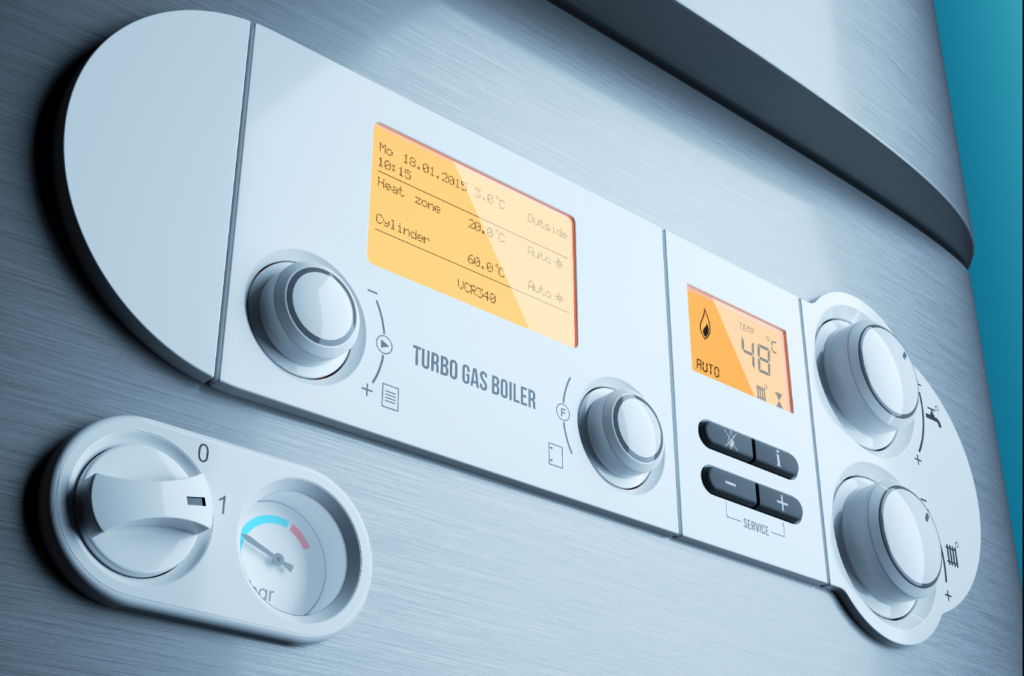Small and medium enterprises in Newcastle should invest in solar power now because commercial electricity costs have surged 68% since 2020, while solar system installation in Newcastle, NSW, has dropped 34% in the same period. The financial case has never been stronger—SMEs are achieving 3.2-5.8 year payback periods with internal rates of return exceeding 18-24%. More critically, federal tax incentives allowing instant asset write-offs expire progressively through 2026, making 2025 the last full year to capture maximum financial benefits that could reduce net system costs by 35-42% for eligible businesses.
The convergence of rising operational costs, mature solar technology, and generous government support creates a rare investment window. Newcastle SMEs paying $12,000-$45,000 annually for electricity can slash these costs by 40-65% through solar for businesses Newcastle NSW installations, redirecting capital from utility bills into growth initiatives. Early adopters report transformational impacts: improved cash flow, competitive pricing advantages, enhanced sustainability credentials, and insulation from the energy price volatility that threatens less-prepared competitors.
This article is based on:
- Real ROI data from Newcastle SME solar installations (2023-2025)
- Federal instant asset write-off and accelerated depreciation benefits
- Commercial electricity tariff structures and demand charge elimination
- Cash flow improvements and working capital optimisation
- Newcastle’s solar irradiance advantages for commercial applications
- Technology advances reducing operational costs for SMEs
- Competitive positioning and customer perception benefits
- Energy price forecasts and risk mitigation strategies through solar
- Streamlined installation processes minimising business disruption
- System sizing methodologies for manufacturing, retail, and service businesses
The 2025 Financial Incentive Stack: Why Timing Matters
Newcastle SMEs face a closing window on federal incentives that dramatically improve solar economics. The instant asset write-off allows businesses with turnover under $50 million to deduct entire solar system costs in the financial year of installation—creating immediate tax benefits that reduce net investment by 25-30% for companies in the 25-30% tax bracket. A $40,000 solar installation generates $10,000-$12,000 in tax savings this year, cutting the effective investment to $28,000-$30,000 before considering energy savings.
Small-scale Technology Certificates (STCs) provide additional upfront rebates of $5,000-$12,000 on commercial systems, depending on capacity and location. These certificates reduce purchase price immediately rather than through tax returns, improving cash flow for businesses managing tight working capital. Combined with instant asset write-offs, total first-year financial benefits reach 35-42% of system cost—an incentive level unlikely to persist beyond 2026 as federal programs phase down.
The STC scheme reduces rebate values by approximately 7-8% annually through 2030 before complete phase-out. A 30kW commercial system qualifying for $8,500 in STCs today will generate only $7,850 in 2026 and $7,200 in 2027. Businesses delaying installation forfeit $1,300-$2,100 in rebates while continuing to pay full electricity rates—a double penalty that extends payback periods and reduces lifetime returns.
State-level support amplifies federal incentives:
- NSW Energy Savings Scheme certificates for commercial installations over 10kW
- Accelerated approval processes through regional NSW development programs
- Commercial feed-in tariffs ranging $0.08-$0.14/kWh for excess generation
- Virtual power plant revenue opportunities generating $400-$1,200 annually for participating businesses
The combined value of these programs peaks in 2025. Newcastle SMEs installing solar now capture maximum financial support while competitors who delay face diminishing incentives and higher electricity costs—a widening gap that translates to competitive disadvantage in increasingly tight markets.
Electricity Cost Crisis: The Problem Solar Solves
Commercial electricity rates in Newcastle have reached crisis levels for SMEs. Standard business tariffs now average $0.32-$0.38/kWh for consumption charges, while demand charges—fees based on peak monthly consumption—add $8-$18/kW of maximum demand. A manufacturing facility with 150kW peak demand pays $1,200-$2,700 monthly in demand charges alone before consuming a single kilowatt-hour.
These rates show no signs of moderating. The Australian Energy Market Operator forecasts continued increases of 4-7% annually through 2028 as coal generation retires and transmission infrastructure requires upgrades. SMEs accepting these rates as unavoidable face electricity costs consuming 12-18% of revenue by 2028—up from 6-9% in 2019—eroding profitability and forcing difficult decisions about staffing, expansion, or survival.
Solar energy for business in Newcastle provides the only realistic hedge against this trajectory. Once installed, solar generation costs remain fixed at $0.03-$0.05/kWh over 25+ years regardless of grid price movements. A Newcastle manufacturing business installing solar in 2025 locks in energy costs while competitors endure 4-7% annual increases—creating a compounding cost advantage that grows more valuable each year.
Real-world examples demonstrate this impact. A Mayfield commercial kitchen reduced monthly electricity costs from $4,800 to $1,900 through a 40kW solar installation, saving $34,800 annually. Over five years, cumulative savings exceed $174,000 against a $38,000 net investment (after incentives)—a 360% return that funded two additional employees and new equipment purchases. These aren’t theoretical projections; they’re actual results from Newcastle businesses leveraging solar energy solutions in Newcastle.
Cash Flow Transformation: Immediate Operational Benefits
Unlike most capital expenditures that strain cash flow before delivering returns, properly financed solar installations improve cash flow from day one. Monthly electricity savings typically exceed finance repayments by 15-35%, meaning businesses experience positive cash flow immediately while building equity in owned infrastructure rather than consuming utility services.
Consider a Newcastle retail operation spending $2,400 monthly ($28,800 annually) on electricity. A $45,000 solar system financed over seven years at 6.5% APR requires $650 monthly repayments. Solar generation reduces electricity bills to $900 monthly—a $1,500 improvement. After loan repayments, net monthly cash flow increases by $850, generating $10,200 additional working capital annually while the system pays for itself.
This working capital improvement proves especially valuable during economic uncertainty. SMEs managing tight liquidity benefit from redirecting $15,000-$40,000 annually from electricity expenses into inventory, marketing, staffing, or reserves. The cash flow benefit operates independently of profitability—even businesses with thin margins or temporary losses realise improved liquidity through reduced operational expenses.
Demand charge elimination delivers additional cash flow benefits for businesses with variable load patterns. Solar generation during business hours flattens consumption profiles, reducing peak demand levels that trigger expensive charges. A Wickham warehouse reduced peak demand from 165kW to 78kW through 50kW of solar, eliminating $1,450 monthly demand charges—$17,400 annual savings that improved cash flow without reducing operational capacity or productivity.
Tax Strategy: Maximising Deductions and Depreciation
Beyond instant asset write-offs, solar installations create ongoing tax planning opportunities that financial advisors often overlook. Systems not fully expensed in year one qualify for accelerated depreciation under the diminishing value method, allowing 30-40% deductions in early years even if the instant write-off isn’t utilised. This flexibility helps businesses optimise tax positions across multiple years rather than forcing all benefits into a single tax year.
Solar investments qualify as plant and equipment rather than building improvements, making them eligible for more favorable depreciation treatments. Roof-mounted systems don’t constitute building modifications under ATO guidelines—they’re removable equipment that retains separate classification. This distinction matters for businesses leasing premises or planning facility changes, as solar systems can be depreciated immediately rather than over building life.
Section 40-880 of the Income Tax Assessment Act provides additional benefits for small business entities. Beyond the instant write-off, these provisions allow solar systems to be pooled with other depreciating assets and written off when pool values drop below $1,000. Strategic timing of solar installation alongside other equipment purchases can trigger complete pool write-offs, maximising tax benefits while upgrading business infrastructure.
GST treatment provides immediate cash benefits. Businesses registered for GST claim input tax credits on solar system purchases, recovering GST paid within the next BAS cycle. On a $40,000 system, this returns $3,636 within 1-3 months of installation—further improving cash flow and reducing effective net investment before considering energy savings or tax deductions.
Newcastle’s Commercial Solar Advantages
Newcastle’s geographical position delivers solar irradiance advantages that enhance commercial system performance. The city averages 5.3 peak sun hours daily year-round—superior to Sydney (5.0) and comparable to Brisbane (5.5)—meaning solar installations generate 6-8% more electricity than identical systems in many competing markets. This performance advantage translates directly to faster payback periods and higher lifetime returns.
Industrial building stock in Newcastle suits solar installation exceptionally well. Warehouses, manufacturing facilities, and distribution centers feature large, unshaded roof areas ideal for maximising solar capacity. A standard 2,000m² commercial roof accommodates 100-150kW of solar generating 140,000-210,000kWh annually—enough to offset 60-80% of typical industrial consumption while utilising otherwise unproductive space.
Local grid infrastructure supports high solar penetration without the export limitations affecting some Sydney suburbs and rural areas. Ausgrid’s network in Newcastle handles distributed generation effectively, allowing businesses to install larger systems without encountering restrictions that throttle economic returns. Feed-in tariffs for excess generation range $0.10-$0.14/kWh in commercial applications—considerably higher than residential rates and sufficient to justify slight oversising for maximum generation.
The region’s competitive installer market keeps costs controlled. Solar system installation Newcastle NSW pricing runs 8-12% below Sydney rates due to lower labour costs and reduced travel expenses. Multiple experienced commercial solar installers create healthy competition that benefits SMEs through competitive quotes, faster project timelines, and comprehensive warranties that protect long-term performance.
Installation Process: Minimising Business Disruption
Commercial solar installations follow streamlined processes, minimising operational disruption. Initial site assessments require 1-2 hours reviewing electrical infrastructure, roof structure, and consumption patterns. Design and engineering are typically complete within 5-7 business days, while the utility approvals process in 10-15 business days for standard systems—meaning total pre-construction timelines of 3-4 weeks from contract signing.
Actual installation disruption depends on system size but rarely exceeds 1-3 days for typical SME applications. Roof work occurs externally without interior access requirements, while electrical connections require 2-4 hours of scheduled downtime typically performed outside business hours or during low-impact periods. Solar for businesses in Newcastle, NSW: installers coordinate carefully to maintain operations—a stark contrast to building renovations requiring weeks of disruption.
Council approvals for commercial solar have become largely formulaic in Newcastle and Lake Macquarie councils. Systems under 100kW on industrial/commercial zoned properties typically process through complying development pathways requiring 10-20 business days without extensive documentation. This streamlined approach contrasts with other capital projects facing discretionary approvals, extended timelines, and uncertain outcomes.
Post-installation commissioning includes performance verification, system testing, and operator training completed in 2-4 hours. Staff learn monitoring platform access, understand basic troubleshooting, and receive maintenance schedules. Most systems operate autonomously, requiring only quarterly visual inspections and annual professional servicing—minimal ongoing management compared to other business infrastructure.
System Sizing for Different SME Types
Manufacturing businesses with consistent daytime loads optimise solar economics most effectively. Machine shops, fabrication facilities, and light manufacturing typically consume 60-75% of electricity during business hours when solar generates peak output. A facility using 250kWh daily benefits from 50-75kW solar arrays generating 180-270kWh on sunny days—offsetting 70-85% of consumption without battery storage.
Retail operations face different optimisation parameters. Stores typically consume electricity from 9am-6pm with HVAC representing 45-55% of total usage. A boutique retail location using 40kWh daily achieves excellent returns from 10-15kW solar generating 35-52kWh in peak season. Careful HVAC management—pre-cooling using morning solar before customer arrivals—maximises solar self-consumption while maintaining comfort.
Service businesses, including offices, medical centers, and professional services show more variable solar economics depending on operating hours. Standard 9am-5pm operations align well with solar production, while businesses operating evenings or 24/7 require battery storage to achieve comparable returns. A professional services firm using 60kWh daily (40kWh during business hours) optimises with 12-18kW solar plus optional 10-15kWh battery for demand management.
Hospitality venues present unique challenges requiring hybrid approaches. Restaurants and cafes face peak consumption during dinner service (6pm-10pm) after solar generation declines. A Newcastle restaurant using 120kWh daily (65kWh during evening service) benefits from 15-20kW solar plus 20-30kWh battery storage capturing daytime generation for evening deployment—a combination delivering 50-60% energy independence despite challenging consumption timing.
Conclusion: The Strategic Imperative for 2025
Newcastle SMEs face a clear strategic choice in 2025: invest in solar now and capture maximum financial incentives while locking in predictable energy costs, or delay and watch competitors gain cost advantages that compound annually. The combination of instant asset write-offs, federal rebates, declining equipment costs, and rising electricity prices creates investment economics unlikely to improve beyond this year. Every quarter of delay costs $3,000-$12,000 in foregone savings while incentive values decline and electricity rates increase.
The businesses thriving in Newcastle’s economy over the next decade will be those that controlled operating costs aggressively during 2024-2026. Solar installations represent rare capital investments that reduce expenses immediately, improve cash flow from day one, and generate compounding returns over 25+ years. SMEs hesitating while competitors install solar will find themselves at permanent cost disadvantages in markets where 2-3% margin differences determine success or failure.
RESINC Solar has spent three decades partnering with Newcastle businesses to navigate energy transitions. Our commercial solar expertise ensures systems are engineered for maximum financial returns while meeting the unique operational demands of manufacturing, retail, and service businesses.
The real question isn’t whether solar makes financial sense for your SME—the data proves it does decisively. The question is whether you’ll act during 2025’s optimal incentive window, or explain to stakeholders in 2027 why you didn’t capture benefits your competitors now enjoy. When will you stop paying for electricity and start investing in energy infrastructure?
FAQs:
Q1: What’s the typical payback period for commercial solar in Newcastle? A1: Newcastle SMEs achieve 3.2-5.8 year payback periods on commercial solar installations. Manufacturing facilities with daytime loads achieve the fastest returns (3-4 years), while retail and service businesses average 4.5-5.5 years depending on consumption patterns.
Q2: How much can Newcastle SMEs save with commercial solar? A2: SMEs typically reduce electricity costs by 40-65% depending on system size and consumption alignment. Businesses spending $30,000-$50,000 annually save $15,000-$32,000 per year, with savings increasing as grid electricity prices rise 4-7% annually.
Q3: What government incentives are available for SME solar in 2025? A3: Newcastle SMEs can access instant asset write-offs (deduct entire system cost immediately), Small-scale Technology Certificates ($5,000-$12,000 rebates), and accelerated depreciation. Combined benefits reduce net system cost by 35-42% for eligible businesses.
Q4: How long does commercial solar installation take? A4: Complete project timelines average 4-6 weeks from contract to activation, including design (5-7 days), approvals (10-15 days), and installation (1-3 days). Actual business disruption is minimal—typically 2-4 hours of scheduled downtime for electrical connections.
Q5: Can commercial solar systems provide backup power during blackouts? A5: Yes, when paired with battery storage and appropriate inverters. Commercial systems with 20-40kWh batteries provide 4-8 hours backup power for essential operations during grid outages, protecting revenue and preventing production losses.



